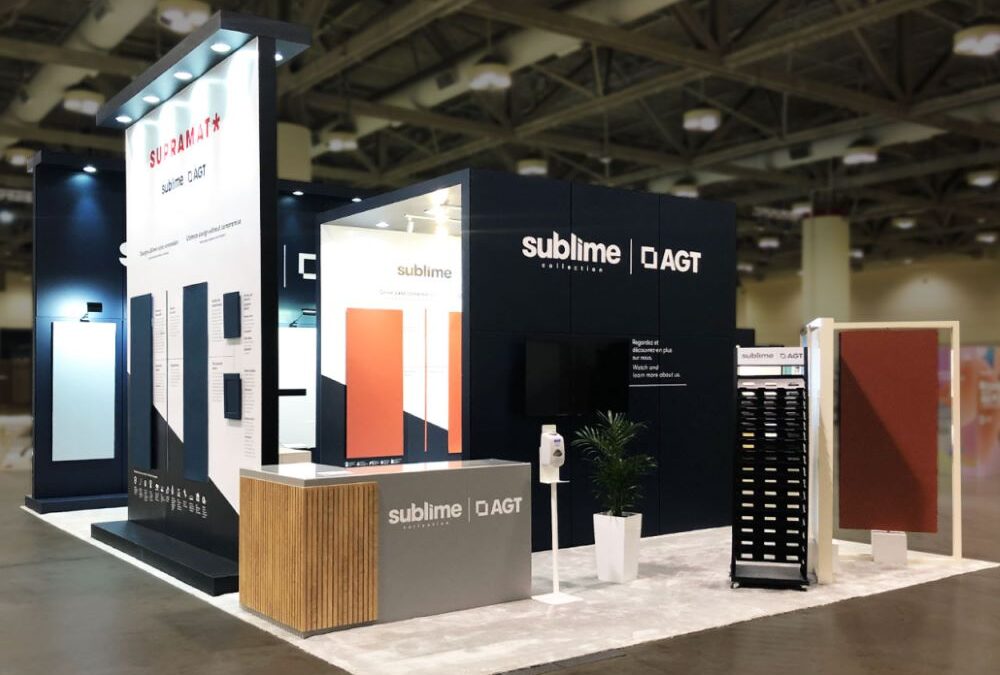Trade shows are bustling events filled with countless booths, each vying for the attention of attendees. To succeed, your booth layout must do more than just look good—it needs to engage visitors on a psychological level. Understanding the principles of psychology behind effective trade show booth layouts can help you design a space that attracts more visitors, encourages interaction, and leaves a lasting impression.
Let’s explore the key psychological factors that influence attendee behavior and how you can apply them to your trade show booth design.
1. First Impressions and Visual Hierarchy
Humans process visual information incredibly fast—often in just a few seconds. When attendees glance across the trade show floor, their brains instinctively look for clear, organized visual cues to decide where to focus.
- Visual hierarchy means arranging elements so visitors’ eyes naturally flow from the most important message to supporting information. This can be achieved through size, color contrast, placement, and lighting.
- Use large, bold headlines at eye level to communicate your core message immediately.
- Position your logo and brand colors prominently but strategically to create instant recognition.
A strong first impression that aligns with visual hierarchy principles helps visitors quickly understand your brand and offerings, encouraging them to step inside.
2. Open Spaces Encourage Approachability
Crowded or cluttered booths can create a sense of confinement and discomfort, deterring visitors from entering. Psychologically, people are drawn to open, inviting spaces where they feel free to move and explore without restriction.
- An open layout reduces anxiety and makes your booth more approachable.
- Avoid blocking entrances with large counters or displays; instead, create multiple entry points if possible.
- Maintain clear pathways that guide visitors naturally through your space.
Open, breathable layouts signal hospitality and make it easier for attendees to engage with your team.
3. The Power of Color Psychology
Colors evoke emotions and can influence behavior, making color choice a vital component of your booth design.
- Warm colors like red, orange, and yellow grab attention and create excitement.
- Cool colors such as blue and green tend to be calming and convey trustworthiness.
- Use your brand colors intentionally, but also consider how colors affect mood and energy in your booth.
- High-contrast colors can help important elements stand out, while softer tones can create a welcoming atmosphere.
Understanding color psychology helps you design a booth that aligns with your brand personality and attracts the right visitors.
4. The Rule of Proximity and Grouping
The human brain naturally groups related objects together to make sense of information. This principle, known as the Gestalt principle of proximity, can be leveraged in booth design.
- Group similar products, signage, or messaging together to reduce cognitive load and make navigation intuitive.
- Avoid scattering important information or displays randomly, which can confuse or overwhelm visitors.
Clear grouping helps attendees quickly find what interests them and understand your offerings.
5. Engagement Through Sensory Stimuli
Humans don’t just see— they also hear, touch, and sometimes even smell or taste. Engaging multiple senses can create memorable experiences.
- Use lighting and textures to add depth and interest to your booth.
- Incorporate interactive elements like touchscreens, product samples, or demos to engage tactile and kinesthetic learners.
- Play subtle background music or sounds that fit your brand tone to set the mood.
Multi-sensory engagement keeps visitors longer and deepens their connection to your brand.
6. The Importance of Comfort and Social Space
Visitors spend hours walking trade show floors, so offering a place to rest can be a powerful psychological draw.
- Include comfortable seating or lounge areas that invite visitors to pause and engage more deeply.
- Spaces designed for casual conversation encourage relationship-building between staff and attendees.
- Designate semi-private areas for meaningful discussions or demos without distractions.
Creating comfort fosters trust and positive associations with your brand.
7. Effective Use of Signage and Wayfinding
Clear signage is essential for reducing visitor frustration and guiding behavior.
- Use directional signs or floor graphics to lead attendees through your booth.
- Highlight calls to action clearly—whether it’s a demo area, consultation spot, or product display.
- Avoid cluttering signs with too much text; prioritize clarity and brevity.
Good wayfinding aligns with how people naturally seek information and helps maintain a smooth visitor flow.
Final Thoughts
Trade show booth design is as much about psychology as it is about aesthetics. By applying principles such as visual hierarchy, open layouts, color psychology, and multi-sensory engagement, you create a booth environment that naturally attracts, welcomes, and holds visitor attention.
Designing with human behavior in mind will give your brand a competitive edge, turning casual passersby into interested prospects and, ultimately, loyal customers. We recommend Trade Show Booth Designs.

